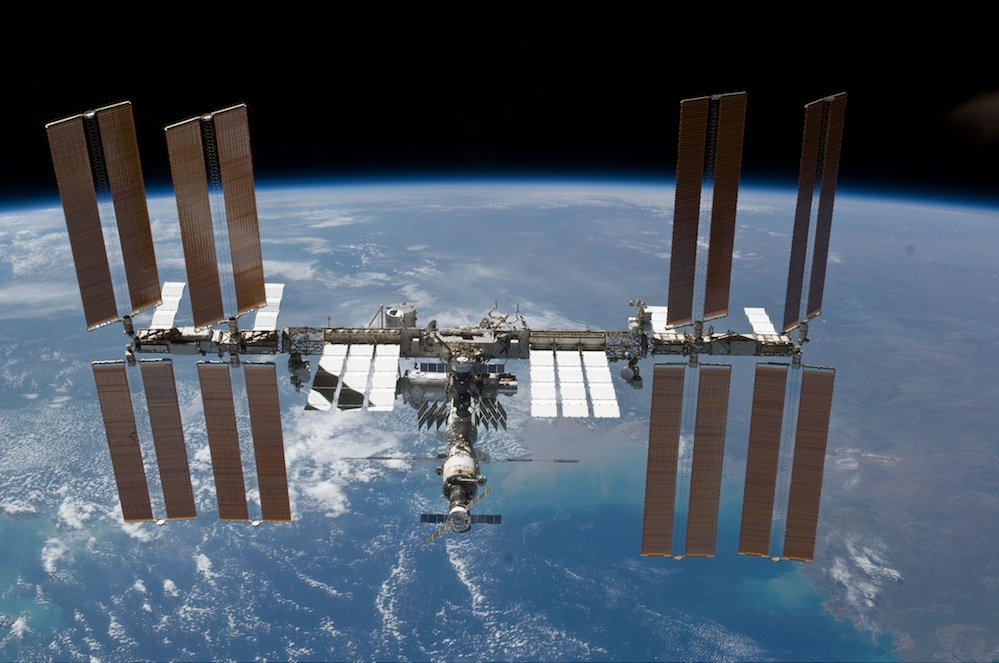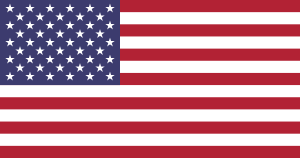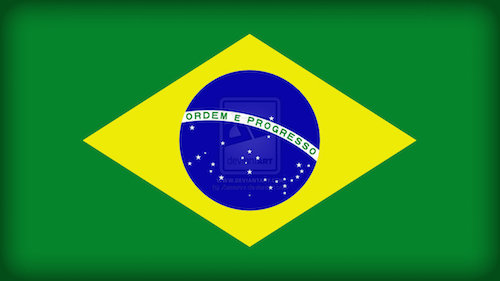The National Center for Earth and Space Science Education (NCESSE), and its international arm, the Arthur C. Clarke Institute for Space Education, are honored to announce the start of program operations for Student Spaceflight Experiments Program (SSEP) Mission 14 to the International Space Station (ISS) – the 16th SSEP flight opportunity since program inception in 2010. Mission 14 to ISS officially began on September 3, 2019, and we are proud to welcome aboard the 33 communities listed below.
Each participating community submitted a formal Implementation Plan for review and approval, which demonstrated how SSEP would address their community’s strategic needs in STEM education, and detailed a real world plan for how a Local Team of educators would engage typically hundreds of students in real microgravity experiment design and proposal writing. Based on the Implementation Plans, the 33 Mission 14 communities combined will engage 29,300 grade 5-16 students in experiment design, and expect over 3,800 flight experiment proposals to be received from student teams. A 2-step formal proposal review process, culminating with the SSEP National Step 2 Review Board meeting in December 2019 at NASA’s Goddard Space Flight Center in Greenbelt, MD, will select one flight experiment for each of 33 communities. One community, the University of Pittsburgh, is flying 1 additional experiment, for a total of 34 Mission 14 flight experiments.
Of special note–
- 20 of the 33 Mission 14 communities are returning: Mission 14 is the seventh mission for both Hillsborough County, Florida, and Knox County, Tennessee; the sixth mission for Kansas City, Missouri/Kansas, Burleson, Texas, and Pharr, Texas; the fifth mission for the University System of Maryland, and Springfield, New Jersey; and the fourth mission for Galloway, New Jersey, and WNY STEM, in Buffalo/Niagara, New York. Mission 13 is also the third flight for 5 other communities.
- three of the Mission 14 communities are undergraduate efforts: i) the University System of Maryland; ii) Stockton University, Galloway, New Jersey; and iii) the University of Pittsburgh, Pennsylvania.
- two Mission 14 communities are in Canada: Edmonton, Alberta; and Halifax, Nova Scotia.
- one Mission 14 community is in Brazil; The Brazilian Foundation for Support of Physics and Chemistry, based in Sao Paulo, is serving as a national hub to engage multiple communities across Brazil. This Mission 14 effort in Brazil is a testbed for a national model, which could be replicated via future SSEP missions across Latin America.
The 34 flight experiments for Mission 14 to ISS will be selected by December 17, 2019, with a projected launch as the SSEP Apollo payload of experiments (named in honor of NASA’s Apollo Missions to the Moon) in late Spring / early Summer 2020.
Community participation in Mission 14 to ISS has been made possible through NCESSE strategic partnerships with DreamUp PBC , NanoRacks LLC, and the Center for the Advancement of Science in Space (CASIS), as well as our National Partners, the Smithsonian National Air and Space Museum, Subaru of America, Inc., and Magellan Aerospace. Funding for many of the participating communities was also provided by Local Partners – businesses, foundations, and individuals – which provided funding directly to participating schools in their area. The SSEP Mission 14 Community Profiles and Local Partners page is a place on the SSEP website where we provide a profile of each participating community, and we acknowledge the remarkable support provided by all National and Local Partners. We invite you to explore that page to read about your community, and assess if there are any partners that need to be added. To add partners, please contact SSEP Flight Operations Manager John Hamel, email: johnhamel@ncesse.org.
Program Overview and Heritage to Date
The Student Spaceflight Experiments Program (SSEP) is designed as a national model for STEM education, and immerses hundreds of students across a participating community in an authentic real world, trans-disciplinary research experience as part of America’s Space Program. This is not a simulation – we are truly inviting each community into America’s Space Program. We are inviting all participating students to take on the role of real microgravity researchers – formally designing microgravity experiments against real world engineering and technology constraints, writing real proposals against a proposal guide, and going through a real proposal review competition. SSEP was created in the very best spirit of allowing our students to see firsthand what is expected of professional scientists and engineers on the frontiers of human exploration.
Each participating SSEP community is provided a flight certified, microgravity research mini-laboratory and launch services to transport the mini-lab containing one student team designed microgravity experiment to the International Space Station in Low Earth Orbit, where an astronaut will operate the experiment. Each community has a Local Team of educators that first delivers an established microgravity curriculum to hundreds of students, and the students then form formal research teams of 3-5 students per team. Each of the resulting 50-100 teams vie for the single experiment slot provided to their community through formal experiment design and proposal writing, mirroring how professional researchers secure limited research assets through a formal call for proposals. Review of all proposals culminates with the SSEP National Step 2 Review Board selecting the flight experiment for each participating community.
Heritage: Since program inception in 2010, 109,950 grade 5-16 students in 178 communities across the U.S., Canada, and Brazil have been immersed in real research, designing microgravity experiments to fly to ISS. Over 22,400 formal research proposals have been submitted by student teams. To date, 281 experiments have flown to ISS and returned to Earth for harvesting and analysis by their student flight teams. Over 147,000 more students across the entire grade preK-16 pipeline were engaged in their communities’ broader STEAM experience, submitting 120,670 Mission Patch designs. Each year, communities send delegations to the SSEP National Conference at the Smithsonian National Air and Space Museum, in Washington, DC, where student flight teams report on experiment design and science results.
To get into the spirit of SSEP Mission 14 to ISS, the video below is the NASA live coverage of the launch of SpaceX CRS-18 from Kennedy Space Center in Florida at 6:01 pm ET July 25, 2019. The SpaceX CRS-18 Dragon spacecraft carried the 41 SSEP Mission 13 experiments to ISS. The Mission 13 experiments were conducted by the astronauts for a month on orbit, with Dragon returning to Earth, and splashing down in the Pacific off the California coast, on August 27, 2019, less than 1 month ago.
You can watch videos of all SSEP launches since program inception, with the first two SSEP payloads on the final flights of Space Shuttles Endeavour (STS-134) and Atlantis (STS-135), and watch videos of astronauts operating the experiments, at the Launch and On-Orbit Operations History page.
SSEP Mission 13 to ISS
Vehicle: SpaceX CRS-18
Launch: July 25, 2019, 6:01 pm ET
Site: Space Launch Complex 40, Cape Canaveral Air Force Station, FL
Payload Designation: SSEP15 – Gemini, 41 experiments
SSEP Mission 13 Information: Flight Profile, Media Coverage, Press Kit
Mission 13 Participation: Participating Communities, Flight Mission Patches, Conference Presentations
Mission 14 Communities – Welcome Aboard!
1. Sao Paulo, BRAZIL
(SSEP RETURNING COMMUNITY)
Brazilian Foundation for Support of Physics and Chemistry
Garatéa Mission
2. Edmonton, Alberta, CANADA
(SSEP RETURNING COMMUNITY)
Edmonton Public School Board
3. Halifax, Nova Scotia, CANADA
Gorsebrook Junior High School
Halifax Regional Centre for Education
4. Winfield City. AL
(SSEP RETURNING COMMUNITY)
Winfield City School System
5. Buckeye, AZ
Buckeye Elementary School District
6. Corcoran. CA
(SSEP RETURNING COMMUNITY)
John Muir Middle School
Corcoran Unified School District
7. Moreno Valley. CA
(SSEP RETURNING COMMUNITY)
Moreno Valley Unified School District
8. Redlands, CA
Redlands Unified School District
9. Stamford, CT
(SSEP RETURNING COMMUNITY)
Stamford High School
Stamford Public School District
10. Hillsborough County, FL
(SSEP RETURNING COMMUNITY)
Hillsborough County Public Schools
11. Pasco County, FL
Pasco County Public Schools
12. Anne Arundel, MD
(SSEP RETURNING COMMUNITY)
Anne Arundel County Public Schools
13. University System of Maryland (USM), MD
(SSEP RETURNING COMMUNITY)
University of Maryland College Park
14. Westford, MA
Stony Brook School
15. Harper Woods, MI
Chandler Park Academy School District
16. Kansas City, MO/KS
(SSEP RETURNING COMMUNITY)
aSTEAM Village
17. Galloway, NJ – Stockton University
(SSEP RETURNING COMMUNITY)
Stockton University
18. Springfield, NJ
(SSEP RETURNING COMMUNITY)
Springfield Public Schools
19. WNY STEM – Buffalo/Niagara, NY
(SSEP RETURNING COMMUNITY)
20. Shoreham, NY
Shoreham-Wading River Central School District
21. Bethany, OK
Bethany Public Schools
22. Enid, OK
Enid Public School District
23. Pittsburgh, PA – University of Pittsburgh
(SSEP RETURNING COMMUNITY)
University of Pittsburgh School of Pharmacy
University of Pittsburgh Swanson School of Engineering
24. Sumter, SC
(SSEP RETURNING COMMUNITY)
Alice Drive Middle School
Sumter School District
25. Knox County, TN
(SSEP RETURNING COMMUNITY)
Knox County Public School System
26. Bandera, TX
Bandera Middle School
Bandera Independent School District
27. Burleson, TX
(SSEP RETURNING COMMUNITY)
Burleson Independent School District
28. Lufkin, TX
Lufkin Independent School District
29. Lumberton, TX
Lumberton Independent School District
30. Pharr, TX
(SSEP RETURNING COMMUNITY)
Thomas Jefferson T-STEM Early College High School
Pharr-San Juan-Alamo Independent School District
31. Bellevue, WA
(SSEP RETURNING COMMUNITY)
Open Window School
32. Hayward, WI
Lac Courte Oreilles Ojibwe School
33. iForward – Grantsburg, WI
(SSEP RETURNING COMMUNITY)
Grantsburg School District
To all the teachers, thousands of students, and stakeholder organizations across the 33 Mission 14 communities – welcome aboard.
SSEP – real spaceflight all the time
The Student Spaceflight Experiments Program (SSEP) is a program of the National Center for Earth and Space Science Education (NCESSE) in the U.S., and the Arthur C. Clarke Institute for Space Education internationally. It is enabled through a strategic partnership with DreamUp PBC and NanoRacks LLC, which are working with NASA under a Space Act Agreement as part of the utilization of the International Space Station as a National Laboratory. SSEP is the first pre-college STEM education program that is both a U.S. national initiative and implemented as an on-orbit commercial space venture.
The Smithsonian National Air and Space Museum, Center for the Advancement of Science in Space (CASIS), and Subaru of America, Inc., are U.S. National Partners on the Student Spaceflight Experiments Program. Magellan Aerospace is a Canadian National Partner on the Student Spaceflight Experiments Program.





I think you would weigh less because there be no gra vi tee 🙂